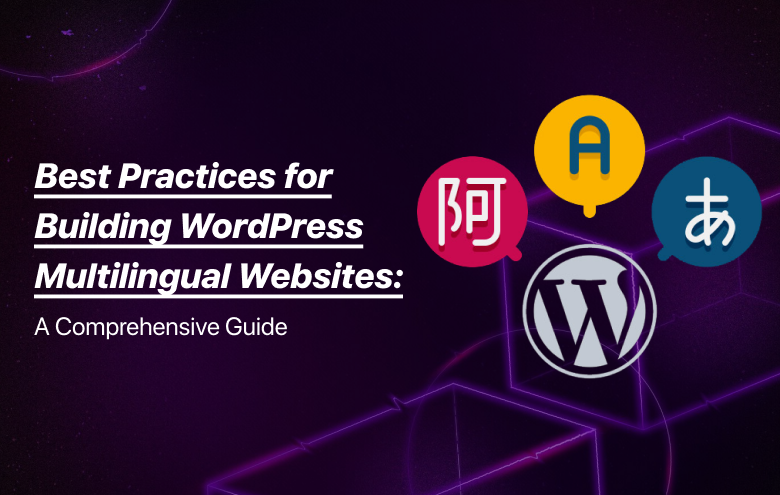In an interconnected global landscape, creating a multilingual website is not just a choice but a necessity for reaching diverse audiences. WordPress, the versatile content management system, offers robust tools and plugins to facilitate the development of multilingual websites.
In this guide, we’ll explore best practices for creating WordPress sites that seamlessly cater to audiences in different languages. From translation plugins to SEO strategies, let’s delve into the key aspects of building and optimizing multilingual websites.
Multilingual Website Development:
- Plan your site structure with multilingual considerations from the start.
- Choose a responsive design that accommodates varying content lengths due to language differences.
- Implement user-friendly navigation with clear language switch options.
WordPress Translation Plugins:
- Explore popular translation plugins like WPML (WordPress Multilingual) and Polylang.
- Consider factors such as ease of use, compatibility, and support when selecting a translation plugin.
- Regularly update your translation plugins to benefit from new features and security patches.
Language Switcher in WordPress:
- Place the language switcher prominently for easy access.
- Customize the switcher to match your site’s design and maintain a seamless user experience.
WPML Best Practices:
- Utilize WPML’s advanced features like string translation for dynamic content.
- Leverage WPML’s translation management system for streamlined workflow.
- Regularly check for plugin updates and compatibility with your WordPress version.
Multilingual SEO for WordPress:
- Implement hreflang tags to indicate language and regional targeting to search engines.
- Utilize SEO-friendly URLs with language identifiers.
- Focus on unique, high-quality content for each language version to enhance SEO.
Internationalization in WordPress:
- Follow WordPress internationalization (i18n) standards during theme and plugin development.
- Use gettext functions for text translation in themes and plugins.
- Ensure that your code supports translation functions for dynamic content.
Translating WordPress Themes:
- Choose themes that are translation-ready and support multilingual features.
- Translate theme elements using the selected translation plugin.
- Test the theme’s responsiveness and layout across different languages.
Language-Specific Content in WordPress:
- Tailor content for cultural nuances and preferences.
- Use custom fields or plugins to manage language-specific content variations.
- Regularly update and synchronize content across language versions.
User Experience in Multilingual Sites:
- Prioritize a seamless and intuitive user experience across languages.
- Ensure consistency in design, navigation, and functionality.
- Test user flows, forms, and interactive elements in each language.
Multilingual Site Performance:
- Optimize images, scripts, and other resources for faster load times.
- Leverage caching mechanisms to enhance performance across language variations.
- Monitor site speed and address any performance bottlenecks promptly.
Conclusion:
Building and maintaining a successful multilingual website on WordPress requires a strategic approach and attention to detail.
By implementing the best practices outlined in this guide, you can create a user-friendly, SEO-optimized, and culturally relevant experience for your diverse audience.
Stay updated with Tec-Sense Innovations for the latest tools and plugins, monitor site performance, and prioritize a seamless user experience to ensure the success of your WordPress multilingual website.
Read More:




